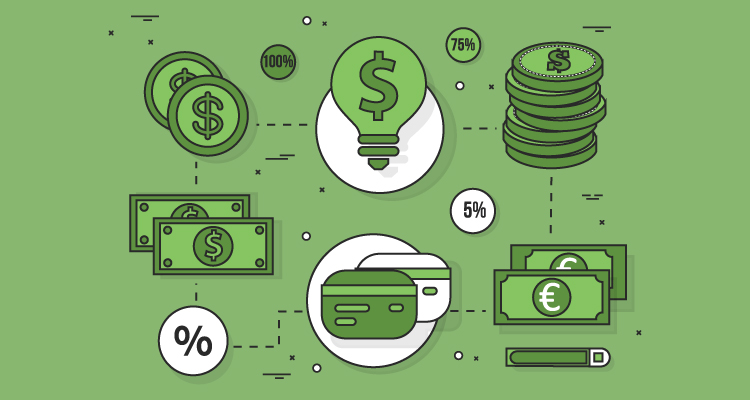Every time you sell a product or provide a service, you have a choice to make. Do you charge first or deliver the product and send an invoice after the fact requesting payment? The big risk with delivering before receiving payment is that the customer won’t pay. Below are some of the most common methods for handling payments and invoicing with some tips on encouraging your customers to pay early.
Table of Contents
TogglePayment up front
The most conservative approach to non-payment risk is requiring payment ahead of time for any products or services. For high risk customers, this may be the best option, as you know you are going to get paid no matter what happens in the customer’s business. For new businesses and companies with public financial trouble, you may want to invoice and require 100% payment up front to help mitigate this risk.
Another option to help you assess your customer’s payment risk is to do a credit check. Phone and utility companies regularly perform a credit check on new customers, and you can do the same if you expect a long-term relationship. Businesses have credit scores that work similarly to individual credit scores. Companies like Dun & Bradstreet and Experian offer business credit checks for a fee if this is something you are interested in for your business. If you want to see your business credit score for free, check out startup Nav.
Of course, from the customer’s perspective there may be a risk that they pay and you don’t deliver, so remember to consider both sides when structuring your payment requirements.
Progressive invoicing
If you want to spread out the risk of non-payment instead of keeping it all for the end, you can follow a practice called progressive invoicing. In this scenario, your fees are broken up into milestone payments due upon completion of agreed upon phases of the project.
For example, when I had my freelance website development business up and running I would charge a 50% payment up front and 50% on completion. This ensured that I wouldn’t build an entire website and not get paid at all. It demonstrated that the customer was willing and able to pay, and helped smooth over my lumpy income streams.
Depending on the size and scope of a project, you can have more than two payments. You might provide a service that is best split into three, four, or more payments. You might be in a business that is best served by a monthly invoice for work completed. There are no hard and fast rules, just the guidelines and precedents set by those who came before us.
Traditional invoicing
Finally, the last form of invoicing is traditional invoicing. In this case, the product or service is delivered and an invoice is then sent requesting payment. If you have a good relationship with your clients, you can count on prompt, on-time payments. But not all customers are in a hurry to write you a big check or enter their credit card information.
For my freelance writing business, this is the modus operandi. Prepayment is extremely rare in my industry. In most cases, the product is delivered up front and payments are sent bi-weekly, monthly, or as invoiced. This is where my monthly invoicing comes into play on the last day of the month.
With this method, it is possible you will not get paid at all. I also own a flash mob business, Denver Flash Mob, and one time in the history of the company we did not get paid for a flash mob. I learned my lesson and switched to progressive billing with $100 due up front to ensure I don’t lose money on an event. But in my freelance writing business, I have never had an issue with anything beyond late payments.
Encourage early payment with payment terms
Every invoice I send has a due date. Typically, my due date is “net 15,” which means the invoice is due 15 days after it is sent. Thanks to my digital invoicing system, invoices are received the same day they are sent, and half a month is a reasonable timeframe to require payment.
In other businesses, net 15 is not the norm. My brother-in-law runs a construction business, and payments over 30 days are standard. Some large companies require 30 or 45 day payment terms, so depending on who you are working with your terms may vary per client.
Some businesses offer a discount for prepayment. For example, let’s say a lumber company sends a truckload of two by fours for a project. The invoice says “2/15 net 45,” which means the company offers a 2% discount if payment is completed within 15 days, or the full amount is due in 45 days. Offering a small discount helps get the cash into your bank account faster, which is always a good thing.
Follow your industry best practices
Setup an invoicing system that matches your values and shows your customers you trust them and care. If you treat clients like allies and partners, your relationship may last many years. If you act like a collection agent all the time, your customers may get irritated. This will cause them to ditch you as a vendor.
Each industry has different common practices for payments. Contraction is different from freelancing, and most other industries have their own payment standards. By default, you should do the same as your competitors. At the end of the day the choice is yours.
















